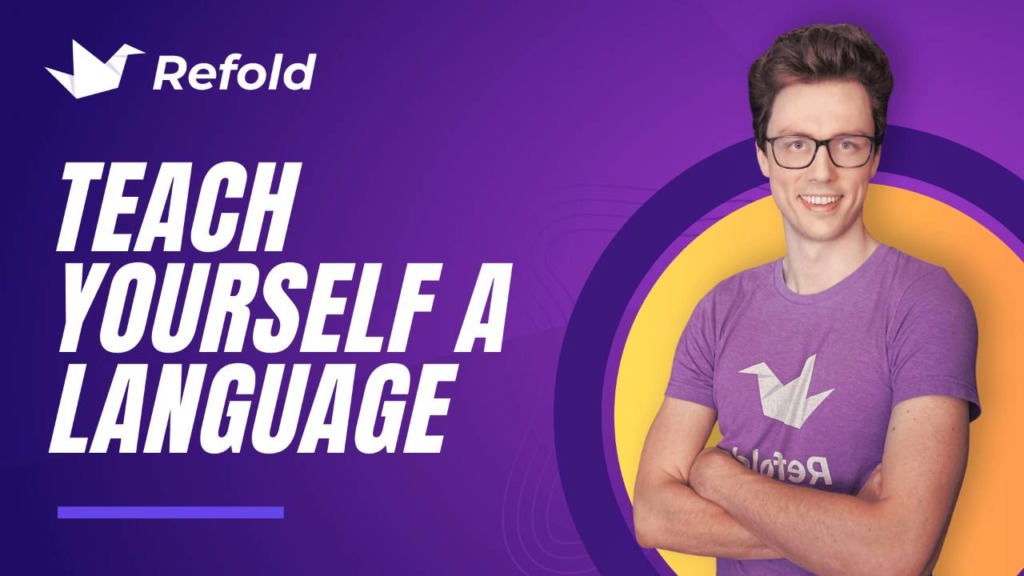There are four stages In Refold’s Roadmap:
- Learn the Basics
- Learn to Understand
- Learn to Speak
- Expand Your Ability
Each stage is broken into substages. Each substage has different goals, strategies, and advice to help you focus your effort on what’s most beneficial for where you are in the process. We provide self-tests at each substage to help you determine if you are ready for the next one.
Stage 1: Get Started
In Stage 1, you will learn the basics of your target language (TL) and what tools to use to learn directly from immersion. You will focus on building habits, learning the writing and phonetic systems of the language, and learning basic grammar and vocabulary.
Stage 2: Learn to Understand
In Stage 2, you will build your comprehension until you can fully understand a genre of native content. Stage 2 is broken into three substages:
2A: Understand Simple Content
In Stage 2A, you will focus on simple content, such as children’s TV shows. Children’s shows help you acquire the common vocabulary and grammar that you started studying in Stage 1. Once you can follow the plot of simple content, you’ll graduate to Stage 2B.
2B: Follow Your Interests
In Stage 2B, you have enough of a foundation to start pursuing your interests. For example, if you’re interested in fashion, then you could start following fashion vloggers on YouTube that speak your TL.
As you explore your interests, your comprehension will grow until you can follow the ideas in your immersion content. You will start to truly enjoy the content you’re immersing in. At this point, you can move on to Stage 2C.
2C: Narrow Your Focus
When you reach Stage 2C, you will be enjoying your content, but there will still be gaps in your comprehension. To fill those gaps quickly, you will narrow your focus to one genre (aka “domain”) of native content until you can fully understand it.
Native content means content originally created in your TL for native speakers. It does not include translations or learner content.
You can choose any domain you like (e.g. science fiction, fashion, cooking), however, we recommend focusing on slice-of-life TV first because it’s most relevant to daily speech.
Stage 3: Learn to Speak
Stage 3 focuses on converting your comprehension into speaking ability. Stage 3 is broken into three substages:
3A: Understand Casual Conversation
The style of language used in everyday conversation is a little different from what you mastered in Stage 2, so the first step is to build up your comprehension in this new domain. Once you can understand casual conversation, writing and speaking will come easily to you.
3B: Practice Writing and Pronunciation
In Stage 3B, you will practice writing and pronunciation as separate skills. For pronunciation practice, you will choose a language parent and copy their manner of speaking so that you can sound native-like.
Twitch streamers, podcasters, and YouTubers are all good options for a language parent.
3C: Start Speaking
In Stage 3C, you will combine your writing and pronunciation skills and start speaking. By the end of Stage 3, you will have achieved basic fluency in your TL.
Basic fluency means that you’ll be fully functional in your TL. You will be able to speak about daily life and any other domains that you’ve chosen to master. The best part: you won’t be translating from your NL. Your thoughts will go directly into your TL and you will be able to speak naturally and comfortably.
Stage 4: Expand Your Ability
Once you’ve achieved basic fluency, it’s your choice how to continue your language acquisition journey. You could choose to expand your comprehension abilities by immersing in new domains like biology, business, or politics. You could also choose to deepen your fluency and focus on trying to sound more native-like.
In Stage 4, we explain different approaches to expanding and deepening your language ability.
Where to Start?
Many learners already have some experience studying their target language and won’t need to start at the beginning of the roadmap. No matter what level you are at, we recommend reading the entire guide so you don’t miss anything.
Once you’ve read the guide, use the following test to find your level and which stage to start with:
Can you read the writing system? Do you know 1000 words?
If not, go to Stage 1. If yes to both, go to Stage 2A.
Can you recognize most of the words in a TV show for children (7+ years old) while watching with TL subtitles?
If yes, go to Stage 2B.
Can you follow the plot of a TV show for adults (16+ years old) while watching with TL subtitles?
If yes, go to Stage 2C.
Do you have a near-perfect comprehension of a TV show for adults (16+) without any subtitles?
If yes, go to Stage 3A.
Are you conversationally fluent in your TL, but want to continue deepening and expanding your fluency?
If yes, go to Stage 4.
It’s important to be honest with yourself when answering these questions. It’s better to underestimate your ability than overestimate. If you are unsure of where to start, try starting from Stage 1A. You can always move up later when you feel comfortable.





